
Lithuania, officially the Republic of Lithuania, is a country in the Baltic region of Europe. Lithuania is considered to be one of the Baltic states. The country is situated along the southeastern shore of the Baltic Sea, to the east of Sweden and Denmark. It is bordered by Latvia to the north, Belarus to the east and south, Poland to the south, and Kaliningrad Oblast to the southwest. Lithuania has an estimated population of 2.8 million people as of 2019, and its capital and largest city is Vilnius. Other major cities are Kaunas and Klaipėda. Lithuanians are Baltic people. The official language, Lithuanian, is one of only two living languages in the Baltic branch of the Indo-European language family, the other being Latvian.

Samogitia or Žemaitija is one of the five ethnographic regions of Lithuania. Žemaitija is located in northwestern Lithuania. Its largest city is Šiauliai. Žemaitija has a long and distinct cultural history, reflected in the existence of the Samogitian dialect.

The Lithuanian nobility was historically a legally privileged class in the Grand Duchy of Lithuania consisting of Lithuanians, from the historical regions of Lithuania Proper and Samogitia, and, following Lithuania's eastern expansion, many Ruthenian noble families (boyars). Families were primarily granted privileges for their military service to the Grand Duchy. The Polish-Lithuanian Commonwealth had one of the largest percentages of nobility in Europe, close to 10% of the population, in some regions, like Samogitia, it was closer to 12%.
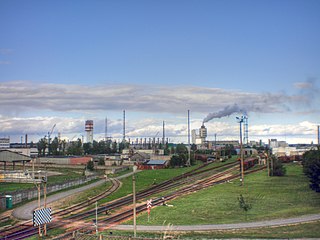
Kaunas County is one of ten counties of Lithuania. It is in the centre of the country, and its capital is Kaunas. On 1 July 2010, the county administration was abolished.

Telšiai, known also by several alternative names including Telsiai, Telshi and Telschi in English sources, is a city in Lithuania with about 25,000 inhabitants. It is the capital of Telšiai County and Samogitia region, and it is located on the shores of Lake Mastis.

Aukštaitija is the name of one of five ethnographic regions of Lithuania. The name comes from the relatively high elevation of the region, particularly the eastern parts.

Dzūkija or Dainava is one of five ethnographic regions of Lithuania. Dzūkija is a cultural region defined by traditional lifestyles and dialects of the local Lithuanian population and has never been defined as a political or administrative unit. Traditionally, Alytus is regarded as the capital of the region, although it is not the largest city in Dzūkija.

This article is about the administrative divisions of Lithuania.
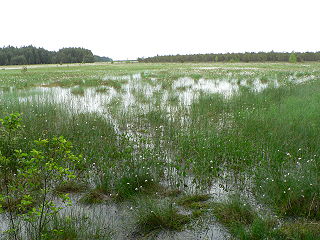
Varėna District Municipality is a municipality in Alytus County in southern Lithuania.

The Alytus District Municipality is a municipality in Alytus County, Lithuania, located in the Dzūkija ethnographic region.
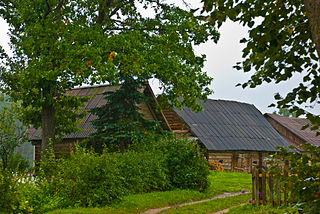
Zervynos is an ethnographic village in the Varėna district, Lithuania. It is situated within the territory of the Dzūkija National Park near the Ūla River. The Saint Petersburg – Warsaw Railway runs through this village. Zervynos has 48 homesteads; 8 homesteads and 32 separate buildings are officially declared ethnographic monuments. The village was among the sites short-listed for nomination for the UNESCO World Heritage Site. Though the village is isolated by the Dainava Forest, it is a busy place during summer as tourists kayaking in the Ūla River pass through the settlement.
The Battle of Skuodas or Schoden was a medieval battle fought in ca. 1259 near Skuodas in present-day Lithuania during the Lithuanian Crusade. The Samogitian army of 3,000 invaded Courland and on their way back defeated the Livonian Order, killing 33 knights and many more low-rank soldiers. In terms of knights killed, it was the eighth largest defeat of the Livonian Order in the 13th century. This victory led to a Semigallian insurrection against the Livonian crusaders, which lasted from 1259 to 1272.
Aukštaitian is one of the dialects of the Lithuanian language, spoken in ethnographic regions of Aukštaitija, Dzūkija and Suvalkija. It became the basis for the standard Lithuanian language.
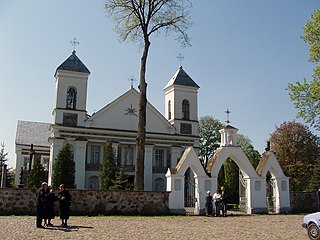
Valkininkai is a historic town in Valkininkų (Valkininkai) eldership, Varėna district municipality, Alytus County, Lithuania, located about 22 km (14 mi) northeast from Varėna and about 55 km (34 mi) southwest from Vilnius. At the 2001 census its population was 238 and at the 2011 census it was 229.

Suvalkija or Sudovia is the smallest of the five cultural regions of Lithuania. Its unofficial capital is Marijampolė. People from Suvalkija are called suvalkiečiai (plural) or suvalkietis (singular). It is located south of the Neman River, in the former territory of Vilkaviškis bishopric. Historically, it is the newest ethnographic region as its most distinct characteristics and separate regional identity formed during the 19th century when the territory was part of Congress Poland. It was never a separate political entity and even today it has no official status in the administrative division of Lithuania. However, it continues to be the subject of studies focusing on Lithuanian folk culture of the 19th and early 20th centuries.
In the NUTS codes of Lithuania (LT), the three levels are:

Adam Łapeta is a Polish professional basketball player for Wilki Morskie Szczecin of the PLK.
Dionizas Poška was a Lithuanian cultural figure of the early 19th-century Samogitian Revival, the early stage of the Lithuanian National Revival. Born to a family of petty Samogitian gentry, Poška attended Kražiai College and worked as a lawyer. He dedicated the last decade of his life to cultural work. He had wide interests in the Lithuanian language, culture, and history. He collected archaeological artifacts and antiques and stored them in Baublys, which is considered to be the first Lithuanian museum. Poška wrote many works but during his life he published only a letter poem and two articles on history. His most famous work is epic poem "The Peasant of Samogitia and Lithuania". He also compiled a trilingual Polish–Latin–Lithuanian dictionary but did not finish it.
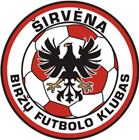
Futbolo klubas Širvėna, commonly known as Širvėna, is a Lithuanian football club located in Biržai, center of Biržai District. They played in the II Lyga, Western zone, the third tier of Lithuanian football from 2013 to 2018. In soviet occupation was in Pirma lyga.

Eduards Volters (1856–1941) was a linguist, ethnographer, archaeologist who studied the Baltic languages and culture. He was a long-time professor at the Saint Petersburg University (1886–1918) and Vytautas Magnus University (1922–1934).



















